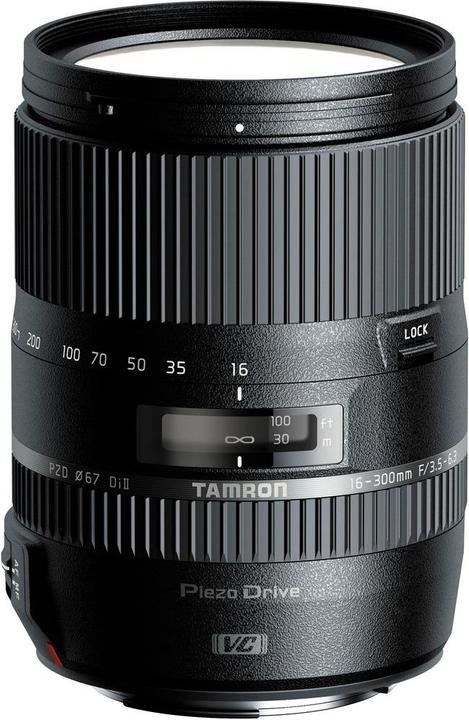
Tamron 16-300mm f/3.5-6.3 Di II VC PZD, Canon EF-S
Canon EF-S, APS-C / DX

Tamron 16-300mm f/3.5-6.3 Di II VC PZD, Canon EF-S
Canon EF-S, APS-C / DX
L'offre de Digitec est de 502 CHF: Tamron 16-300mm f/3.5-6.3 Di II VC PZD, Nikon F
I have found nothing at digitec
Since I only have the 16-300mm, I can't make a comparison. However, I think the values should be on par. I mainly take landscape photos and I am very enthusiastic about my lens. However, with such lenses with a very large wide-angle zoom range, you have to make sure that you always work with the smallest possible aperture. To get there professionally I recommend, Google then type in "test Tamron 16-300mm and then read a lot, same with the other lens. You will see that both lenses have certain quality limitations.
Yes
Yes, that's right. Excellent objective by the way!
Only the manufacturer can tell you whether the remanufactured product also has a 10-year warranty.
Yes, the lens is compatible with the D3100.
Yes, the lens hood is included.
Should work, has EF-S connection like the camera and is APS-C compatible...
Image stabilisation NO. With a speed booster Canon EF on MFT yes.
Hello Erich.hess Yes it is compatible :)
No. This lens is made for the Sony A Mount. For the Sony A7 series you need Sony E Mount full frame.
Hello Ramona_aha. As far as I know, the @6.. and 7.. have a different bayonet. Then this lens would not fit. Should it serve you, you could try the lens at my place. Greetings Paul paul at sollberger.info
My forewriter "Plagioklas" has answered correctly. The Tamron 16-300mm can be mounted on the EOS5D MarkII with the bojonet. The EOS 5D Mark III is a full-frame camera and requires EF lenses. The Tamron 16-300 corresponds to the Canon EF-S series which is only suitable for the smaller image chip (APS-C). Please refer to the operating instructions of your EOS 5D MIII to find out whether the camera settings can be changed so that EF-S lenses can also be used. If this is possible, the result will certainly be a cropfactor of 1.6, which means that the angle of view of the lens then corresponds to that of a full-frame 27 - 480mm. In addition, this results in a reduction of the exposed area of the image chip and thus a reduction of the maximum possible pixels. The reduction of the maximum possible pixels in combination with the optically weaker lens is not an ideal combination! Other lens combinations are recommended for the EOS 5D MarkIII! The Tamron 16-300 is ideal if, despite digital mirror reflex (with APS-C chip size), the largest possible focal length range is to be covered with little weight and storage space and documentation is more important than absolute image quality.
No this lens cannot be used with the Sony Alpha 7 without an adapter.
I think so: on my D5100 and D5300 it works flawlessly and takes super images.
Yes, this lens is compatible with the D90.
We can offer you the following article: https://www.galaxus.ch/fr/s1/product/tamron-16-300mm-f35-63-di-ii-pzd-macro-sony-objectifs-2531385. However, the Sony version does not have image stabilisation.
The lens is not compatible with the 5D Mark3.
Normally yes, at least according to a Google search
Hello, there is a focal length problem with this lens and the Canon 750 and 760 D cameras, which can be solved by the installation of a firmware by the company Tamron in the lens itself. I'll put you the link to the article (in German) concerning this problem. http://www.digitalkamera.de/Meldung/Tamron_macht_Objektive_mit_Firmware_fit_fuer_neue_Canon-DSLRs/9561.aspx
Hello Michibisig, In principle, it will work. However, you must bear in mind that there is a factor of approx. 1.5x for the focal length. Focal length APS-C / DX (small image equivalent) 25.60 - 480 mm if you want more zoom it is certainly good, but bad for the wide angle.
Tamron usually comes with a matching lens hood. This is much more customer-friendly than with Canon, whose inexpensive original lens lines require the lens hood to be purchased separately.
30 of 32 questions